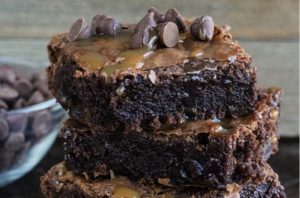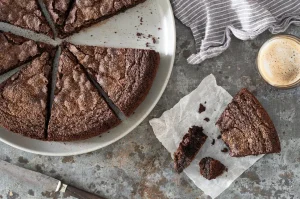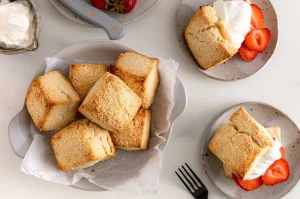Understanding Flour Quality and Its Role in Baking
By: RedmanShop | February 17, 2025
Flour Quality
Flour quality relates to where the wheat was grown, the climate and rainfall, all of which have a bearing on the milled flour quality. Different products will use flours of varying protein levels. In bread making, the critical element is the protein’s ability to develop into a solid network to support the gas produced by the yeast. In cake making, low protein cake flour and other ingredients such as butter, eggs, sugar, baking powder, and the mixing method provide the structure of cake making. In cookie products, a lower protein flour is combined with butter and sugar.
Water Absorption
Water absorption refers to the amount of water the flour will hold when making a dough or batter. The bread maker wants to get as much water into a dough as possible to increase the number of units obtained. The stronger the protein content, the more water absorption will result. On the other hand, because the protein levels in pastry doughs are lower, the water content will range from 53% to 55%.
Cake flour’s (soft wheat) absorption rates vary depending on whether the flour is chlorinated. Chlorinated cake flour will absorb more liquids and support the liquids over a more extensive surface area resulting in soft and moist cakes. Non-chlorinated flour will not be able to carry as much water and if used in some cake batters, you can see a wet core along the base and a slight collapse. The addition of extra baking powder can correct the problem.
Flour Protein
Wheat flour is the only grain with suitable gluten-forming protein that develops when flour and water are mixed. The proteins are called Glutenin (elasticity) and Gliadin (extensibility) and are very important in bread making for mixing, shaping, and structuring the final loaf. The development of the gluten during the mixing of the dough is crucial. The gluten development when making bread will form the loaf structure, whether by hand or machine.
The belief that the higher the protein, the better the flour is not necessarily correct when making bread dough. The ability of the flour to be developed during mixing is critical. Observing how the flour performs when mixing is a good educator on the quality of the flour. Refer to Part Three, Bread Making, for details on the bread-making process of mixing, kneading, and processing procedures.
Flour Treatments
Most flour is now available as unbleached (previously, flour was treated with Benzoyl Peroxide to improve the whiteness). Some bread flours may have Vitamin C and enzyme (amylase) added to standardise the performance. Some cake flours are treated with Chlorine gas to improve performance in specific cake formulas by providing more liquids to enhance the cake’s shelf-life. The consumer can find this information under the ingredients list on the package.
Storage
A cool, dry environment is suitable for holding most flours. Wholemeal, especially stone ground, is best kept under refrigeration. For safety, regular flour should have a shelf life of up to six months. It is best to use refrigeration in a warm, humid environment for prolonged storage.
Must Know
Flour is a component in almost all bakery items; selecting the specific type requires some understanding of flour. Part Three practical section will provide details on the correct flour selection.







